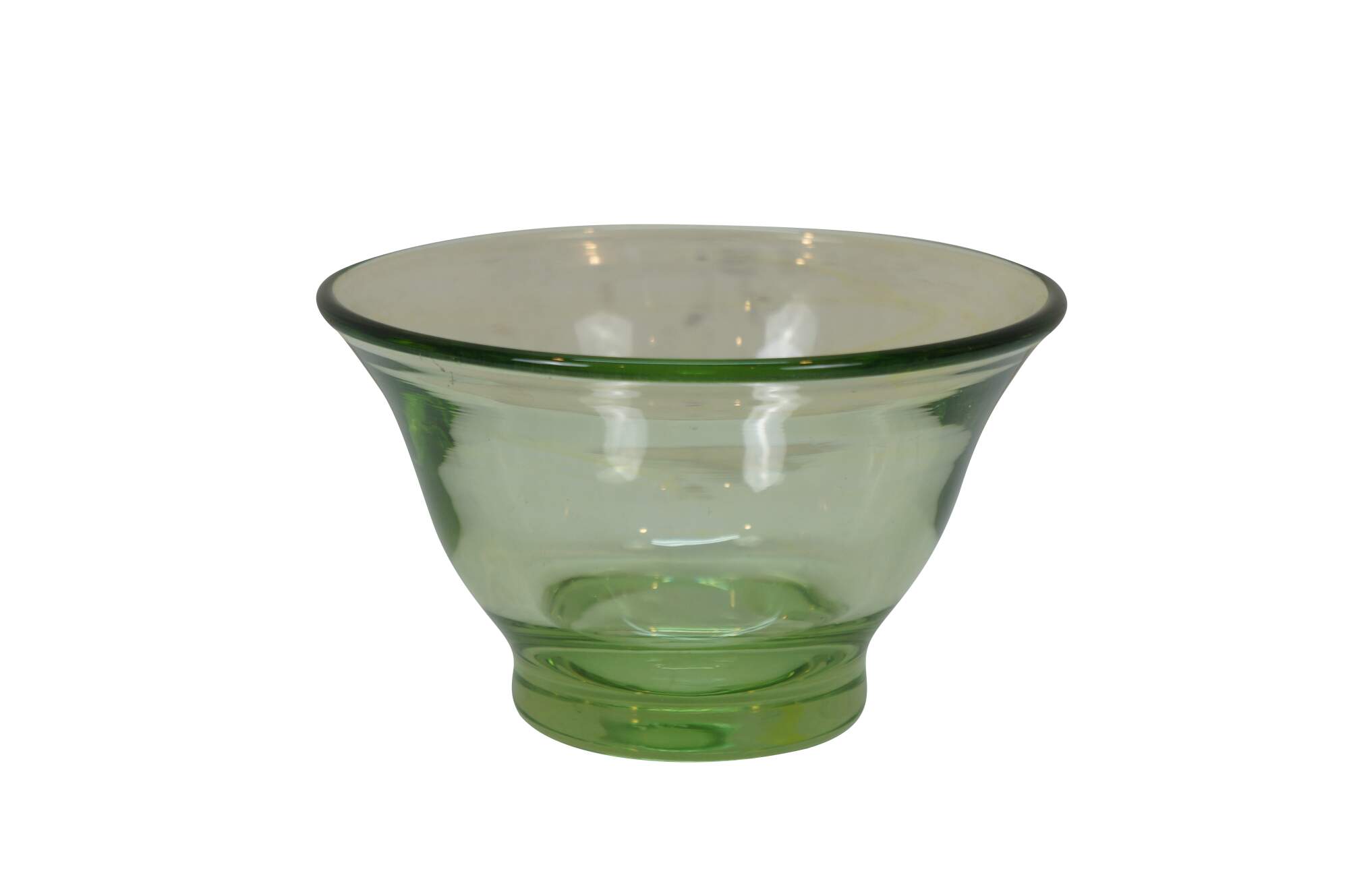
Shipping:
Free Shipping Included
Delivery:
Estimated 2-15 Business Days
Payments:
Credit Card, Check, Cash, PayPal, Apple Pay, Venmo
Returns:
30 Days 100% Money Back Guarantee, Buyer Pays Return Shipping
Description
Vintage mid 20th century art glass bowl / dish by dominick Labino. Simply designed translucent green glass dish with a dense, tapered base and a gently flared mouth. Marked Labino 1968 on base. Faint green glow in UV light.
"Dominick Labino (December 4, 1910 – January 10, 1987) was an American internationally known scientist, inventor, artist and master craftsman in glass. Labino's art works in glass are in the permanent collections of more than 100 museums throughout the world. Labino held over 60 glass-oriented patents in the United States. Dominick Labino was trained as an engineer at the Carnegie Institute of Technology and began his professional career at Owens-Illinois, Inc., a glass manufacturing plant in Clarion, Pennsylvania. In 1944, Dominick left Owens-Illinois to pursue the fiber glass industry with long-time business partner and Executive VP of I-O, Randolph H Barnard. Barnard formed Glass Fibers, Inc. in Toledo, Labino was the head of Research and Development. In 1958, Johns-Manville acquired Glass Fibers, Inc., creating Johns-Manville's modern fiber glass division. Labino stayed on as Vice President and Director of Research and development until his retirement in 1965. Labino continued to serve as a research consultant until 1975. Labino was an innovator in the processes and machines used in forming glass fibers. Three of his inventions employing fiberglass were used in the Gemini and Apollo spacecraft to insulate them against extreme temperatures. According to art historian Martha Drexler Lynn, "Labino had a life-long love of tools, inventing and problem-solving which he coupled with a passion for artistic endeavors..." His interest in blowing glass began in the 1930s, when he ran the Owens-Illinois milk bottling plant. There he had a laboratory in which he created glass formulas. In 1940, his predecessor at the plant, Ben Alderson, showed Labino how to blow glass. Labino later blew glass as a hobby; at Johns-Manville he built a home glass furnace at which to pursue the craft. An early project was a glass paperweight that he created in 1958 for a friend's retirement. By 1960 he had melted a batch of glass and created a primitive blowpipe. Labino and Harvey Littleton, with whom Labino would stage a ground-breaking glassblowing workshop at the Toledo Museum of Art in 1962, met during the time that Littleton was a ceramics instructor at the Toledo Museum of Art School of Design (1949 to 1951) and Labino was taking evening craft classes there. Littleton would go on to found the first fine art glass program at the University of Wisconsin–Madison. In 1963 Labino set up his own glass studio on his farm near Grand Rapids, Ohio. He designed glass-blowing and finishing tools; built his own furnaces and annealing ovens; and began freehand blowing with molten glass. Through his research and development of new technologies, like the fusing of colors, he provided artists with the methods and tools to create glass as art in their own studios, no longer making it necessary to involve glass factories in their creative process. Labino received an honorary doctorate from Bowling Green State University in 1970. In 1971 he received the Governor's Award for the Art, State of Ohio, and was presented with the first Ohio Art Council award for his contribution to the development of molten glass as a fine art form. Labino received the Toledo Glass and Ceramic Award in 1972, and was presented with the Rakow Award for Excellence in Glass by the Corning Museum of Glass in 1985. Labino received the Steuben Phoenix Award in 1977 for his contributions both to the production of industrial glass and to the use of glass in fine art." (Wikipedia)
Condition
Good Overall - Gentle wear; light scrapes
Dimensions
6.5" x 4" (Diameter x Height)